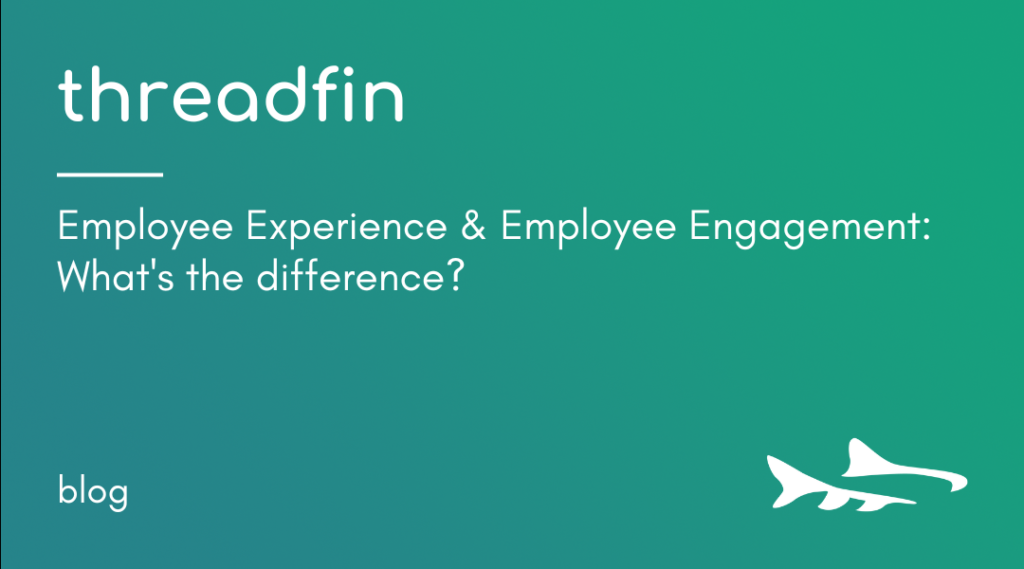You can listen to the content in this article here or watch it on our YouTube channel.
When it comes to employee experience and employee engagement, there are definite differences—engagement and experience aren’t interchangeable when it comes employees.
At Threadfin, we’re focused on employee—and customer—experience. But what does that mean exactly? There’s a lot of confusion around the difference between employee experience and employee engagement so I’m going to break it down for you quickly.
First, let’s take a look at the similarities:
- Both have clear links to job satisfaction and morale.
- They’re both related to productivity and performance.
- Both impact working relationships between employees and employers.
- They’re critical to a company’s success.
It’s obvious employee experience and employee engagement are incredibly important. So how do you tell them apart? What are the differences?
Employee experience is everything a worker learns, does, sees and feels at each stage of the employee lifecycle. It’s their overall journey from the time they’re hired—even before if you count the interview process—all the way through to when they exit the organization. Employee experience is how an employee gets their work done—the tools and resources they have at their disposal to accomplish their tasks.
Does it take them 30 minutes to find the basic information they need? Are they able to quickly book a conference room? Is their digital technology meeting their needs?
Employee experience is made up of the daily actions they need to take to be productive, engaged and successful in their role.
Employee engagement, on the other hand, is related to how involved employees are in their job and how motivated they are to do it well. Employee engagement looks at things like morale, commitment to goals and loyalty to the organization.
Is there an effective internal communications strategy in place? Do employees have the opportunity to join wellness programs? Are there development plans and known opportunities for career advancement?
Engaged employees are recognized for their efforts. They care about their work and about the company. They’re in it for more than a paycheck because they can see how they fit into the bigger picture.
And there you have it! Two very important concepts that can both—in very different ways—reduce hiring costs, increase tenure, increase productivity, decrease churn and strengthen brands.
I hope you found this helpful. If you want to learn more, reach out and we’d be glad to talk through it with you.
Click here to listen to the content in this article here or click here to watch it on our YouTube channel.

